Employee productivity is a measure of how efficiently and effectively employees convert time, resources, and energy into valuable outputs that support business goals. It’s not just about working more — it’s about working smarter, delivering high-quality results with minimal waste. Why does this matter? Because productive employees drive profitability, enhance customer satisfaction, and create a sharper competitive edge. According to 2023 Gallup research, employers with strong workforce engagement experience 18% higher productivity and 23% greater profitability.
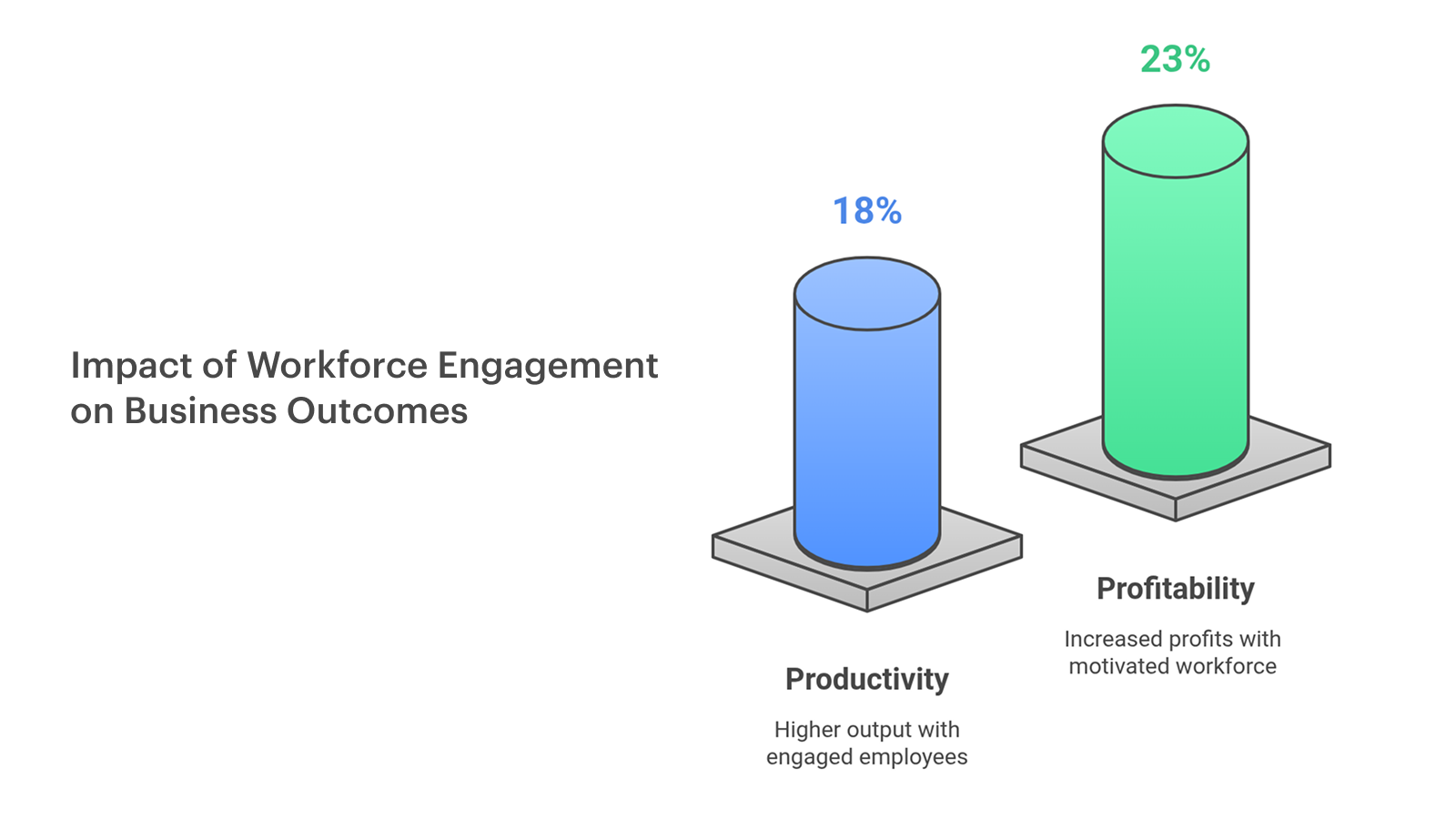
These steps help drive employee productivity and build a healthier, high-performing workplace.
As workplaces evolve — from traditional office setups to remote and hybrid models — our understanding of productivity must evolve too. While remote work can enhance focus and output, it also introduces new challenges in measurement and engagement.
This article breaks down the core drivers of employee efficiency and productivity and offers actionable strategies to optimize performance in today’s dynamic work environment.
Key Takeaways
- Improve employee productivity by prioritizing engagement, recognition, and well-being
- Align individual goals with company purpose to increase motivation
- Provide clear feedback, career paths, and autonomy to allow employees to take ownership and feel empowered.
- Use effective tools and measure results, not just hours
- Train managers to support — not control —productivity
- Eliminate common blockers like unclear priorities and excessive meetings
- Foster a culture of open, ongoing productivity conversations
How to Improve and Increase Employee Productivity
To improve employee productivity, organizations need a strategic approach that combines motivation, clear goals, and supportive workplace systems. Focus on SMART objectives, autonomy, and regular feedback to empower your workforce.
To increase employee productivity, offer flexibility, recognize achievements, and invest in career development. Effective onboarding and the proper tools help new employees improve performance from day one. Supporting mental health and aligning work with purpose are essential to improve productivity and sustain long-term engagement.
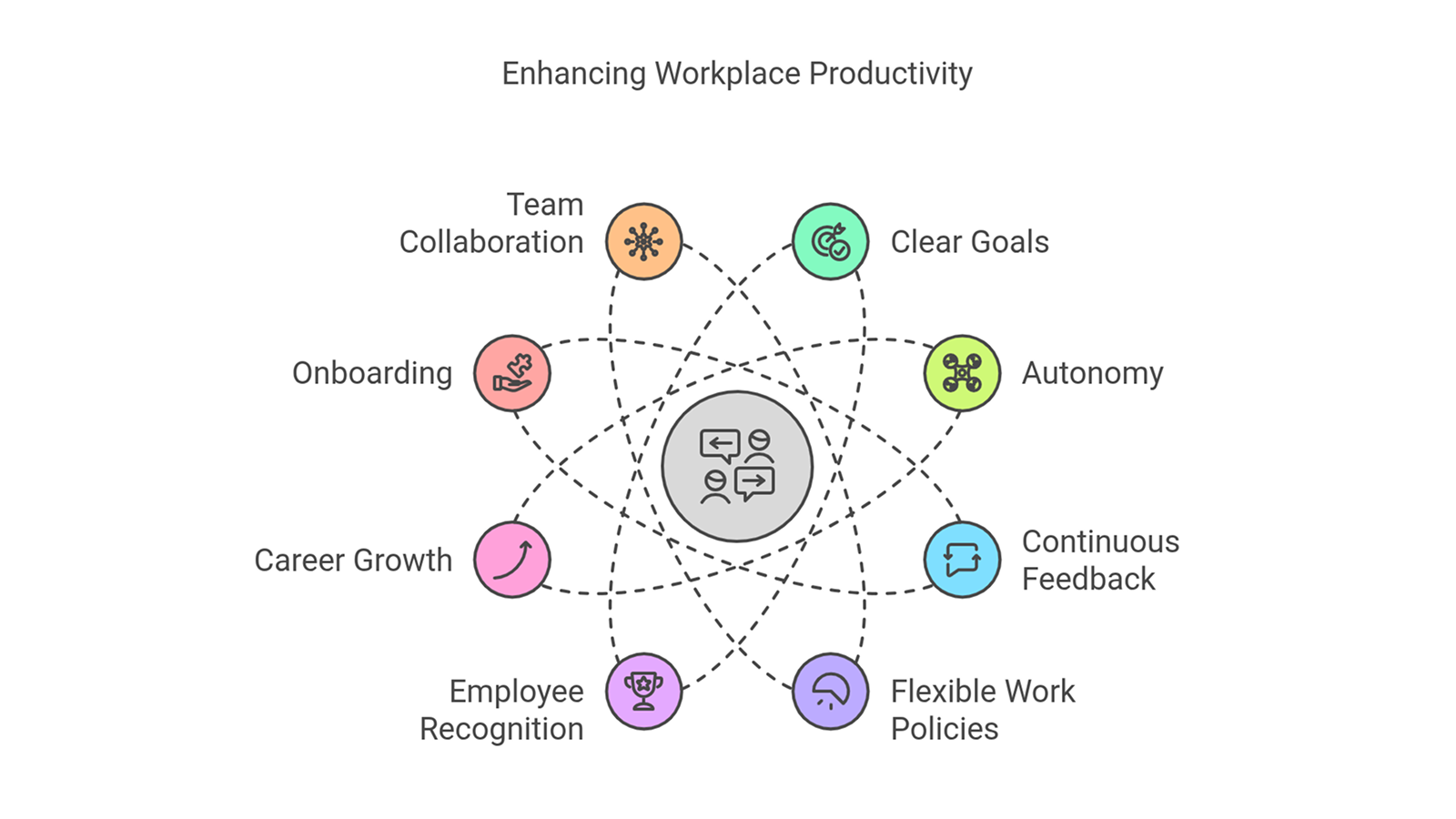
1. Set Clear Goals and Objectives
SMART goals help teams focus and progress faster. Track them with project tools and hold regular check-ins to adjust and celebrate wins. According to a Gallup survey, only 47% of employees strongly agree that they know what is expected of them at work.
2. Promote Autonomy and Avoid Micromanagement
Focus on outcomes, not control. Let employees choose how to achieve results within clear guidelines — this builds trust and drives innovation.
3. Foster Continuous Feedback
Make feedback frequent and actionable. Mix recognition with coaching to keep performance aligned and employees engaged.
4. Implement Flexible Work Policies
Offer flexible hours or remote options tailored to roles. A flexible workplace strengthens morale, output, and reduces absenteeism. Gartner’s 2021 survey found that 43% of employees linked flexible hours to higher productivity, while 30% cited reduced commuting time as a key factor.
5. Recognize Employee Achievements
Frequent, sincere employee recognition — public or private — improves engagement and helps increase productivity cost-effectively. According to a Gartner survey, employees working in human-centric environments — where they’re treated as people, not just resources — are 3.8 times more likely to perform at a high level.
6. Support Career Growth Opportunities
Offer learning programs, mentoring, and clear promotion paths. Growth opportunities improve job satisfaction and retention. According to recent research, 94% of employees said they would stay longer at a company that invests in their career development.
7. Strengthen Onboarding and Training
Streamlined onboarding with role-specific training and early mentorship accelerates integration and long-term productivity.
8. Enhance Team Collaboration
Promote collaboration through shared tools and clear communication to improve employee engagement. Support soft skills to enhance teamwork and drive better results.
9. Use the Right Tools for Productivity
Give teams intuitive, integrated tools to reduce friction and keep focus on high-impact tasks.
10. Streamline Meetings and Minimize Interruptions
Limit meetings, set agendas, and create “focus time.” Meeting-free days can significantly raise productivity. 70% of employees say they would be more productive if they were in fewer meetings.
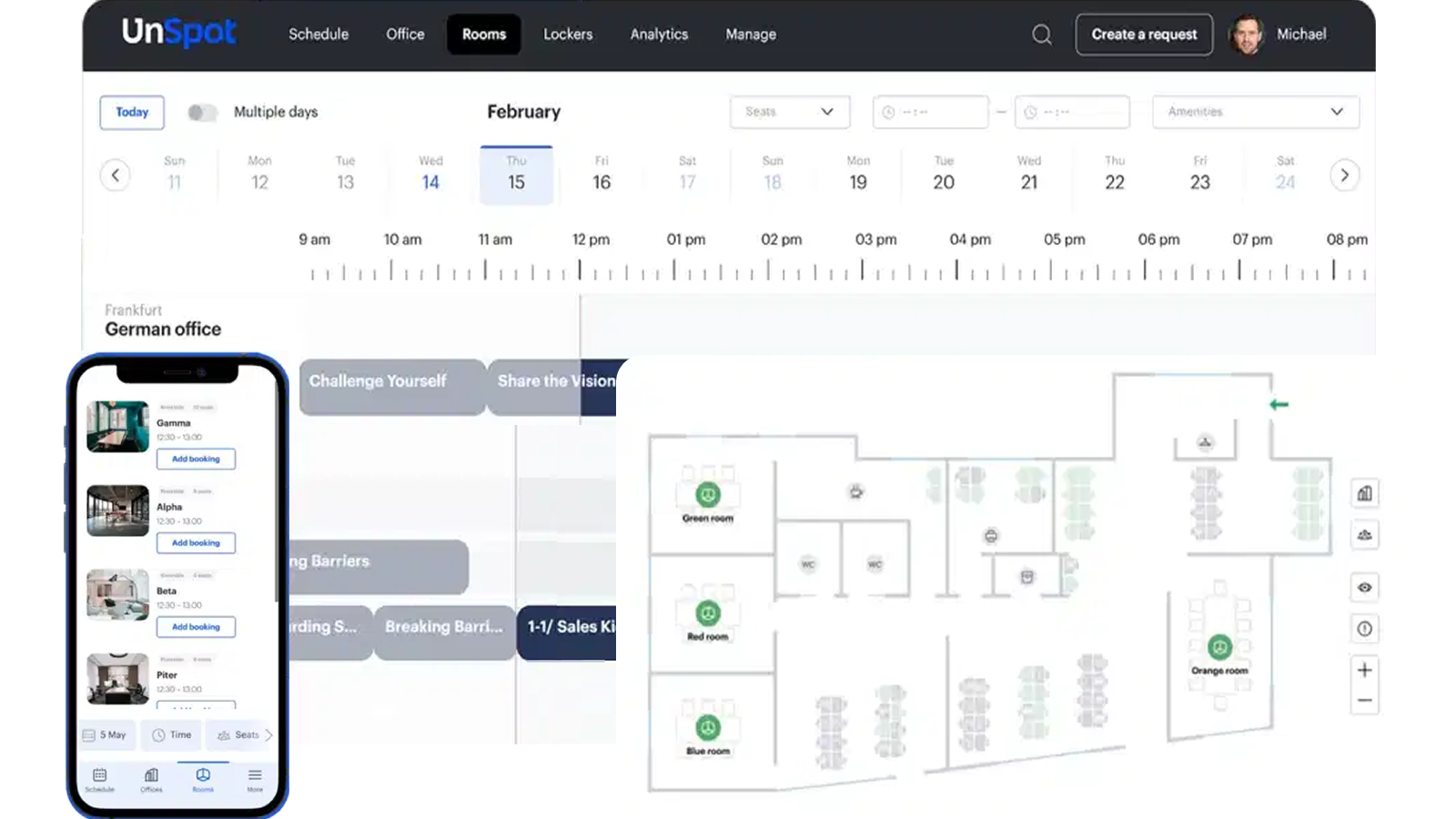
Address Mental Health and Stress
Prevent overload with wellness days, manager training, and regular check-ins to ensure employees feel supported. Research from the American Journal of Health Promotion shows that employees who take part in corporate wellness programs see a 10% boost in productivity.
Ensure Culture Fit and Purpose Alignment
Hire for values, not just skills. Aligning work with purpose increases engagement and long-term commitment.
Top Factors That Influence Employee Productivity
Understanding what drives workforce productivity is essential for building a high-performing, resilient organization. People do their best work when the workplace is engaging, leaders are supportive, and effective tools help remove obstacles. To help improve workplace productivity, here are five key factors that influence how employees perform — and how to increase it for the long term.
Employee Engagement and Motivation
Engaged employees are more focused, productive, and committed. When people feel valued and see purpose in their work, performance improves. New research from McKinsey estimates that low engagement and employee turnover could cost a mid-sized S&P 500 company between $228 million and $355 million annually due to lost productivity.
Well-Being and Burnout Prevention
Burnout threatens long-term productivity. Support mental health with clear work boundaries, regular breaks, and resources.
Leadership and Feedback Culture
Good leaders guide, support, and recognize. Regular feedback and clear communication improve performance.
Work Environment and Flexibility
Flexible policies and optimized spaces increase productivity. Flexibility shows trust and helps employees work at their best. The Future Forum Pulse research shows that employees with flexible schedules report the greatest productivity gains.
Right Tools and Technology
Modern tools reduce friction and enhance workflows. The right technology supports employees, not just streamlines tasks. According to The State of Work in 2023, 77% of workers say that automating routine tasks would significantly boost productivity.
Methods to Measure Employee Productivity
| Method | Description | Best For | Example / Benefit |
| Quantitative vs. Qualitative | Quantitative = numbers (tasks, hours); Qualitative = quality, creativity, peer or customer feedback. | All roles; best when combined | A tech firm measures both features shipped and user satisfaction. |
| Time-Based vs. Task-Based | Time-based = hours worked; Task-based = results achieved. | Time-based: service roles; Task-based: knowledge roles | Task-based tracking suits roles where outcomes matter more than time spent. |
| Service Output & Quality | Tracks both volume (e.g., tickets resolved) and quality (e.g., satisfaction, first-contact resolution). | Customer-facing roles | Provides a balanced view of service performance. |
| Engagement & Sentiment Scores | Uses surveys and sentiment tools to gauge morale and motivation. | All teams | Engaged teams are up to 202% more productive. |
| Productivity Tools | Tools organize, track, and turn data into insight. | Any workplace | The right tools help measure what truly matters — clearly and sustainably. |
To optimize performance, organizations must know how to accurately measure employee productivity. In today’s complex workplaces, this goes beyond counting work hours or outputs. Effective measurement blends both data and context to capture true productivity.
Quantitative vs. Qualitative Metrics
Quantitative metrics are numerical — units produced, tasks completed, or hours worked. They offer objectivity and trend tracking. Qualitative metrics focus on quality of work, creativity, and effectiveness — measured through peer reviews or customer feedback.
For example, a tech firm evaluates both features shipped and user satisfaction to ensure speed doesn’t sacrifice value. The most effective way to measure productivity is by combining both methods.
Time-Based vs. Task-Based Tracking
Time-based tracking (e.g., hours logged) works well for service or hourly roles. Task-based tracking focuses on results, ideal for knowledge workers.
Service Output and Quality Assessment
For service roles, combining volume (e.g., tickets resolved) with quality (e.g., first-contact resolution, satisfaction scores) paints a clearer picture.
Engagement & Sentiment Scores
Employee engagement directly impacts productivity — engaged teams are more effective. Use surveys and team sentiment analysis to spot early warning signs and prioritize improvements.
“In my experience, productivity soars when people aren’t just showing up but genuinely want to engage. That means building a workplace that’s rooted in trust and shows you actually care about the individual behind the job title”.Amy Spurling, CEO and Founder at Compt
Using the Right Tools to Measure Productivity
The proper tools turn scattered data into insights. Choosing the right mix of tools ensures you measure what matters — accurately and sustainably.
Tools to Boost Employee Productivity in the Workplace
The right digital tools can significantly increase overall productivity by streamlining communication, clarifying tasks, and improving engagement. Below are three essential categories that enable teams and drive performance across the workplace.
Collaboration Tools (e.g., Slack, Asana)
These tools centralize project updates, deadlines, and conversations, helping teams stay aligned. Slack organizes communication into searchable channels, reducing email clutter and speeding up response times. Asana enables clear task assignment and visual workflows, making it easy to track progress and accountability.
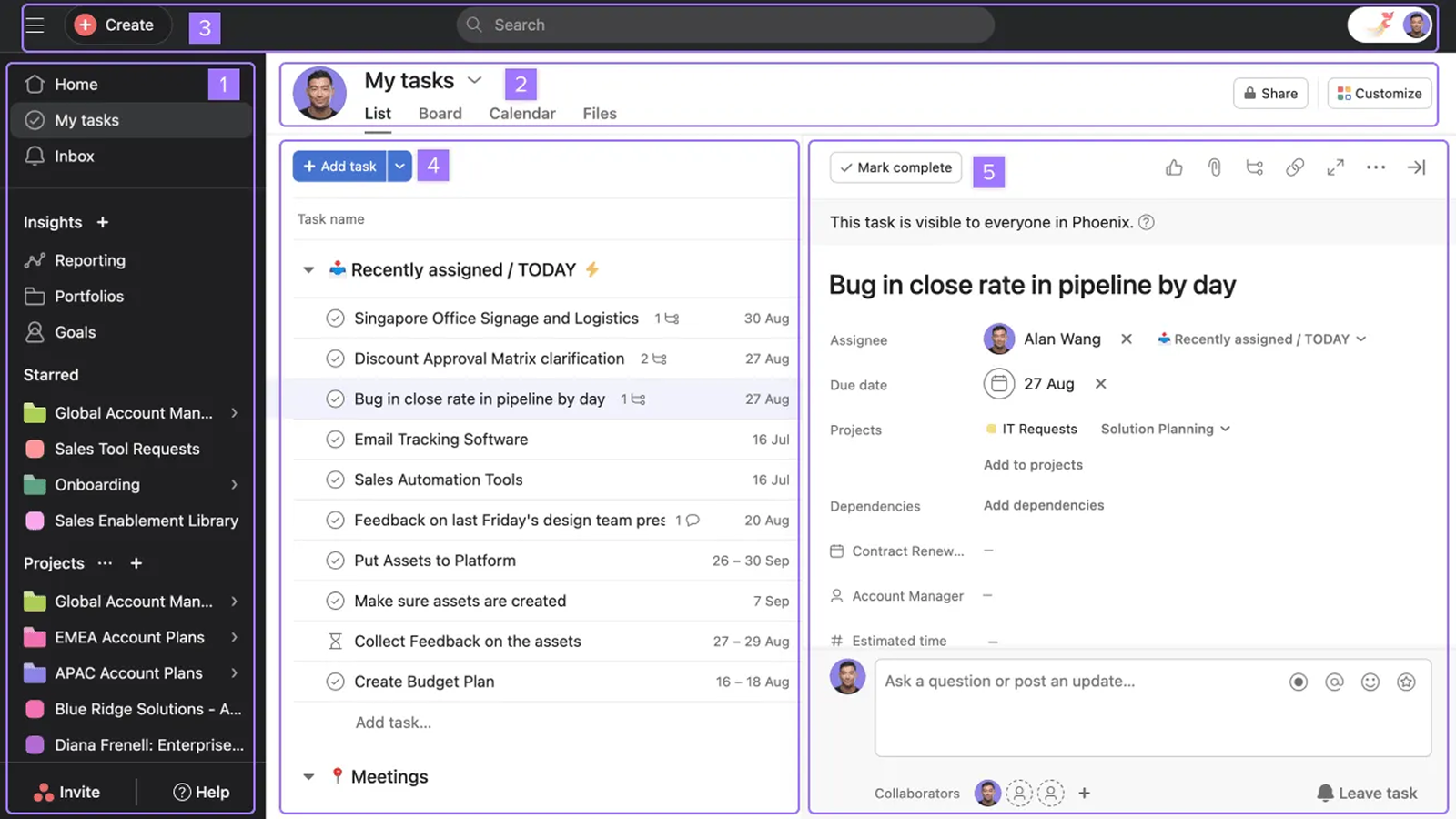
Measurement & Analytics Platforms (e.g., ActivTrak)
To measure employee productivity effectively, organizations need data-driven insights. Platforms like ActivTrak analyze time usage, focus patterns, and workload balance — without micromanaging. These tools highlight productivity trends, helping leaders make informed decisions.
Recognition & Engagement Platforms (e.g., Awardco)
Recognition tools reinforce a culture of appreciation, improving team spirit and contributing to stronger productivity metrics. Awardco allows peer-to-peer and manager recognition, with points redeemable for personalized rewards. Social feeds amplify positive reinforcement across the workplace.
Common Mistakes That Reduce Productivity
Even with good intentions, certain practices can make employees less productive, lower morale, and increase turnover. Here are four common missteps that impact productivity and how to avoid them:
Overloading Employees Without Clarity
Support teams often struggle with slow response times when their work processes require handling chat, phone, and email at once. Clear priorities, defined goals, and the right resources can make these processes more manageable.
Lack of Recognition or Feedback
Failing to acknowledge contributions negatively impacts the employee experience and leads to disengagement. 84% of employees say the simple act of giving recognition inspires them to think about better ways to get things done.
Ignoring Work-Life Balance
Constant availability expectations lead to burnout. According to the Corporate Executive Board, employees who feel they have a good work-life balance are 21% more productive than those who don’t.
Tracking Time Instead of Output
Focusing on hours worked instead of actual results often creates busywork and reduces effectiveness. Employees are more likely to be productive when evaluated on outcomes, not time spent.
✍️ Resume
- Set clear priorities and workflows to avoid overwhelming employees and slowing down performance.
- Recognize contributions regularly — it improves engagement and motivates better work.
- Support work-life balance to prevent burnout and sustain long-term productivity.
- Focus on outcomes, not hours — measuring results is more effective than tracking time.
How to Build a Long-Term Culture of Productivity
Sustainable employee productivity in the workplace isn’t about quick fixes — it’s built through consistent leadership, aligned values, and open feedback. A strong workplace culture supports productivity as an everyday practice, not a one-time push.
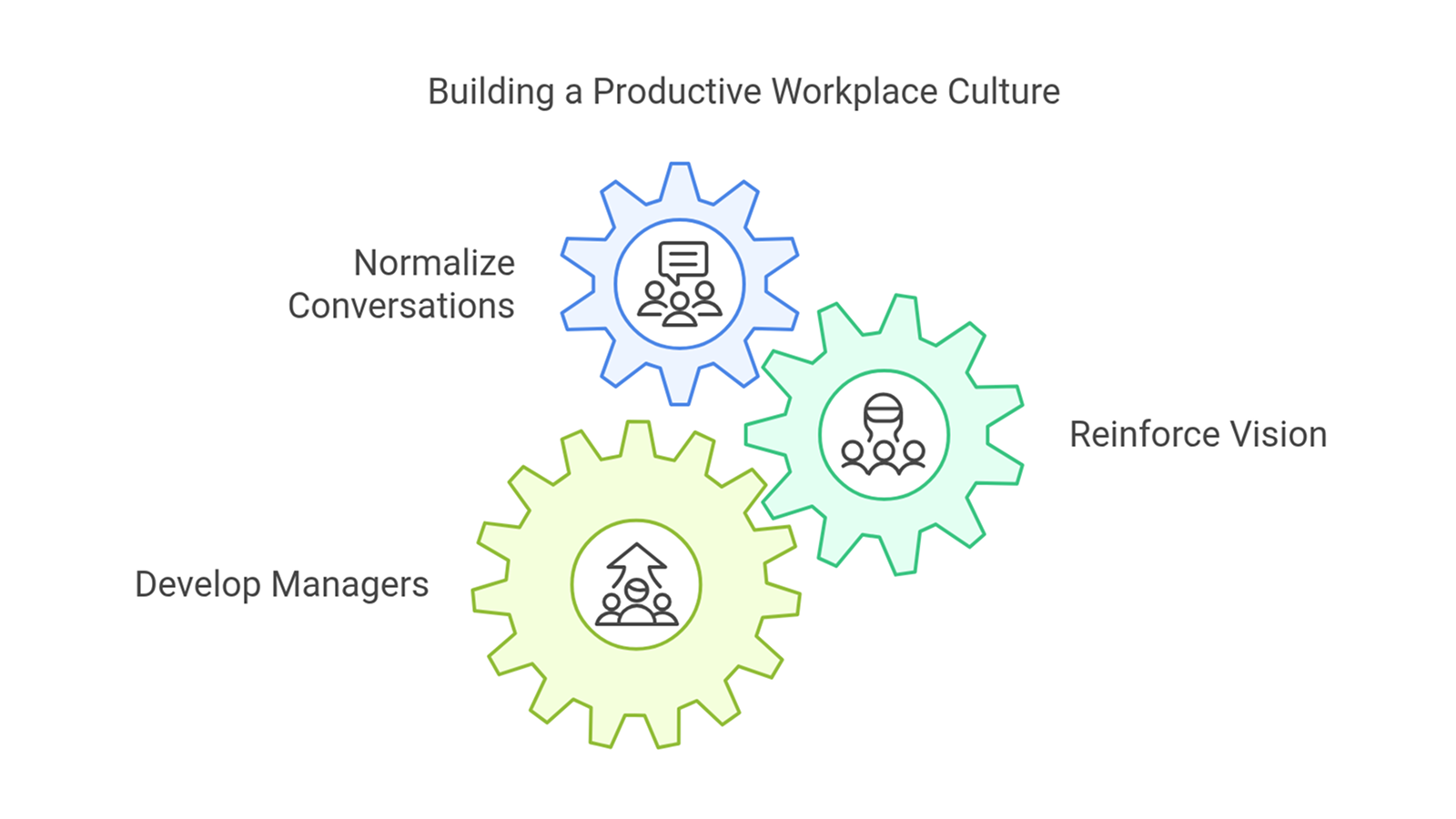
Normalize Productivity Conversations
When teams regularly discuss efficiency and challenges without fear, it leads to shared problem-solving.
Reinforce Shared Vision and Metrics
Teams work better when they see how their tasks connect to the bigger picture. Organizations should link team goals to strategic outcomes and make data visible.
Develop Managers as Productivity Leaders
Frontline managers shape daily productivity. Equip them to set clear goals, remove blockers, and model effective habits.
FAQs About Increasing Employee Productivity
Why Is Employee Productivity Important?
It drives performance, reduces costs, and improves morale. Productive employees deliver better results and experience greater job satisfaction.
What are the 3 reasons productivity increases?
- Engagement & Purpose – Employees perform better when work feels meaningful.
- Effective Tools & Environment – Streamlined systems remove daily friction.
- Well-being – Balanced workloads prevent burnout and sustain output.
What is the strategy to increase employee productivity?
Define clear productivity goals, provide the right resources, and foster performance through employee feedback, focused work, and a culture that values both results and well-being.







